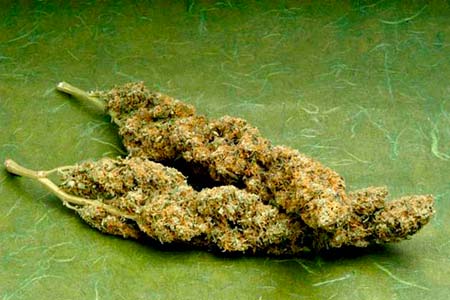 When archaeologists opened the tomb of a Gushi shaman in northwest China, they found his stash. The 2,700 year-old corpse had been buried with just under a kilo of marijuana, the oldest known use of cannabis for purposes other than food or clothing. And researchers believe that he was entombed with the plant so he could enjoy its psychoactive properties in the afterlife.
When archaeologists opened the tomb of a Gushi shaman in northwest China, they found his stash. The 2,700 year-old corpse had been buried with just under a kilo of marijuana, the oldest known use of cannabis for purposes other than food or clothing. And researchers believe that he was entombed with the plant so he could enjoy its psychoactive properties in the afterlife.
A paper published this week in Britain’s Journal of Experimental Botany reports the find in China’s Xinjiang region, where many modern strains of cannabis are thought to have originated. In addition to 789 grams of marijuana, the tomb contained bridles, archery equipment, and a harp, apparent provisions for the afterlife. Unlike other early examples of cannabis use, the research team believes that the marijuana was included for its psychoactive properties. Said the lead researcher, neurologist Ethan Russo:
“It was common practice in burials to provide materials needed for the afterlife. No hemp or seeds were provided for fabric or food. Rather, cannabis as medicine or for visionary purposes was supplied.”
Russo studies the effects of cannabis on the brain, including its use in pain management for multiple sclerosis and cancer patients. He and other researchers have been conducting a battery of tests on the ancient weed, such as attempting to measure the levels of THC and germinate the seeds found in the cache, in an attempt to better understand ancient uses of the plant.
The cache of cannabis is about 2,700 years old and was clearly “cultivated for psychoactive purposes,” rather than as fiber for clothing or as food, says a research paper in the Journal of Experimental Botany. The 789 grams of dried cannabis was buried alongside a light-haired, blue-eyed Caucasian man, likely a shaman of the Gushi culture, near Turpan in northwestern China. The extremely dry conditions and alkaline soil acted as preservatives, allowing a team of scientists to carefully analyze the stash, which still looked green though it had lost its distinctive odor. “To our knowledge, these investigations provide the oldest documentation of cannabis as a pharmacologically active agent,” says the newly published paper, whose lead author was American neurologist Dr. Ethan B. Russo. Remnants of cannabis have been found in ancient Egypt and other sites, and the substance has been referred to by authors such as the Greek historian Herodotus. But the tomb stash is the oldest so far that could be thoroughly tested for its properties.
The 18 researchers, most of them based in China, subjected the cannabis to a battery of tests, including carbon dating and genetic analysis. Scientists also tried to germinate 100 of the seeds found in the cache, without success. The marijuana was found to have a relatively high content of THC, the main active ingredient in cannabis, but the sample was too old to determine a precise percentage. Researchers also could not determine whether the cannabis was smoked or ingested, as there were no pipes or other clues in the tomb of the shaman, who was about 45 years old. The large cache was contained in a leather basket and in a wooden bowl, and was likely meant to be used by the shaman in the afterlife. “This materially is unequivocally cannabis, and no material has previously had this degree of analysis possible,” Russo said in an interview from Missoula, Mont.
“It was common practice in burials to provide materials needed for the afterlife. No hemp or seeds were provided for fabric or food. Rather, cannabis as medicine or for visionary purposes was supplied.” The tomb also contained bridles, archery equipment and a harp, confirming the man’s high social standing.
Russo is a full-time consultant with GW Pharmaceuticals, which makes Sativex, a cannabis-based medicine approved in Canada for pain linked to multiple sclerosis and cancer. The company operates a cannabis-testing laboratory at a secret location in southern England to monitor crop quality for producing Sativex, and allowed Russo use of the facility for tests on 11 grams of the tomb cannabis.
Researchers needed about 10 months to cut red tape barring the transfer of the cannabis to England from China, Russo said. The inter-disciplinary study was published this week by the British-based botany journal, which uses independent reviewers to ensure the accuracy and objectivity of all submitted papers. The substance has been found in two of the 500 Gushi tombs excavated so far in northwestern China, indicating that cannabis was either restricted for use by a few individuals or was administered as a medicine to others through shamans, Russo said. “It certainly does indicate that cannabis has been used by man for a variety of purposes for thousands of years.”